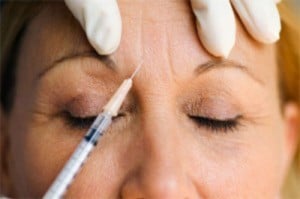Restore your skin's health a chemical peel at a professional clinic.
Browsing Skin Cancer Cells Treatment: The Necessary Function of Mohs in Modern Dermatology Practices
Skin cancer, a difficult medical diagnosis, commonly leaves individuals grappling with numerous treatment options. As we explore the ins and outs of this procedure, one will appreciate its essential function in skin cancer therapy.
Comprehending Skin Cancer: Kinds and Risks
There are three primary kinds of skin cancer: Basal cell cancer, Squamous cell carcinoma, and Cancer malignancy. It accounts for only concerning 1% of skin cancer situations yet creates the large majority of skin cancer cells deaths. Danger aspects include fair skin, background of sunburn, extreme sunlight exposure, living at high elevations or close to the equator, having many moles, a family history of skin cancer, and weakened immune system.
What Is Mohs Surgical procedure and How It's Reinventing Skin Cancer Cells Therapy
Regardless of the various treatments currently readily available for skin cancer cells, Mohs surgical treatment attracts attention as a groundbreaking and extremely effective service. Named after Frederic E. Mohs, the doctor who established the procedure, Mohs surgical procedure is a precise medical technique used to treat skin cancer cells. Throughout the treatment, thin layers of cancer-containing skin are considerably removed and taken a look at up until just cancer-free cells continues to be. This method allows the surgeon to confirm that all cancer cells have been gotten rid of at the time of surgical procedure. This degree of accuracy, integrated with the ability to save as much healthy and balanced cells as possible, is reinventing skin cancer cells treatment. Consequently, Mohs surgical procedure has actually become a cornerstone of contemporary dermatology methods.
The Benefits of Mohs Surgery Over Traditional Skin Cancer Therapies
Building on the innovative nature of Mohs surgical treatment, it's important to consider its many advantages over typical skin cancer therapies. Unlike standard procedures, Mohs offers a greater remedy rate, typically reaching 99% for newbie treatments and 94% for recurring cancers. In addition, it lessens damage to healthy skin, leading to much less scarring and enhanced cosmetic outcomes.
The Treatment of Mohs Surgical Procedure: What to Anticipate During the Refine

Prospective Adverse Effects and Post-Operative Care of Mohs Surgery
Going through Mohs surgery, like any kind of other procedure, entails prospective negative effects that clients should know. Usual negative effects include pain, wounding, and swelling at the surgery site. These are generally short-lived and manageable with over the counter pain medicine and ice packs. In rare situations, clients might experience infection, blood loss, or an allergic reaction to the anesthetic. Post-operative treatment is essential to recovery and lessening adverse effects. This commonly involves maintaining the wound these details tidy and completely dry, taking recommended medications, and staying clear of strenuous activities. Clients must additionally participate in all follow-up appointments for injury treatment and monitoring. In some situations, additional therapies might be required to make certain full removal of the cancerous cells. Abiding by these post-operative care guidelines can substantially boost recuperation and outcomes.
Final thought
